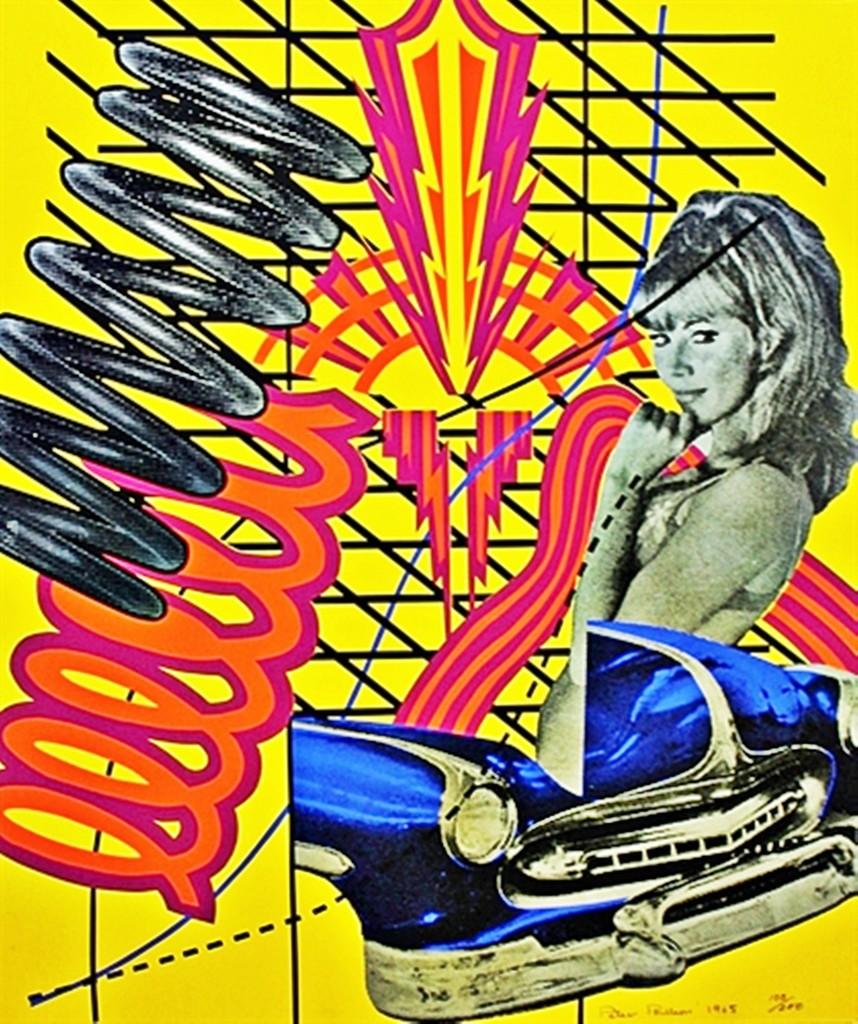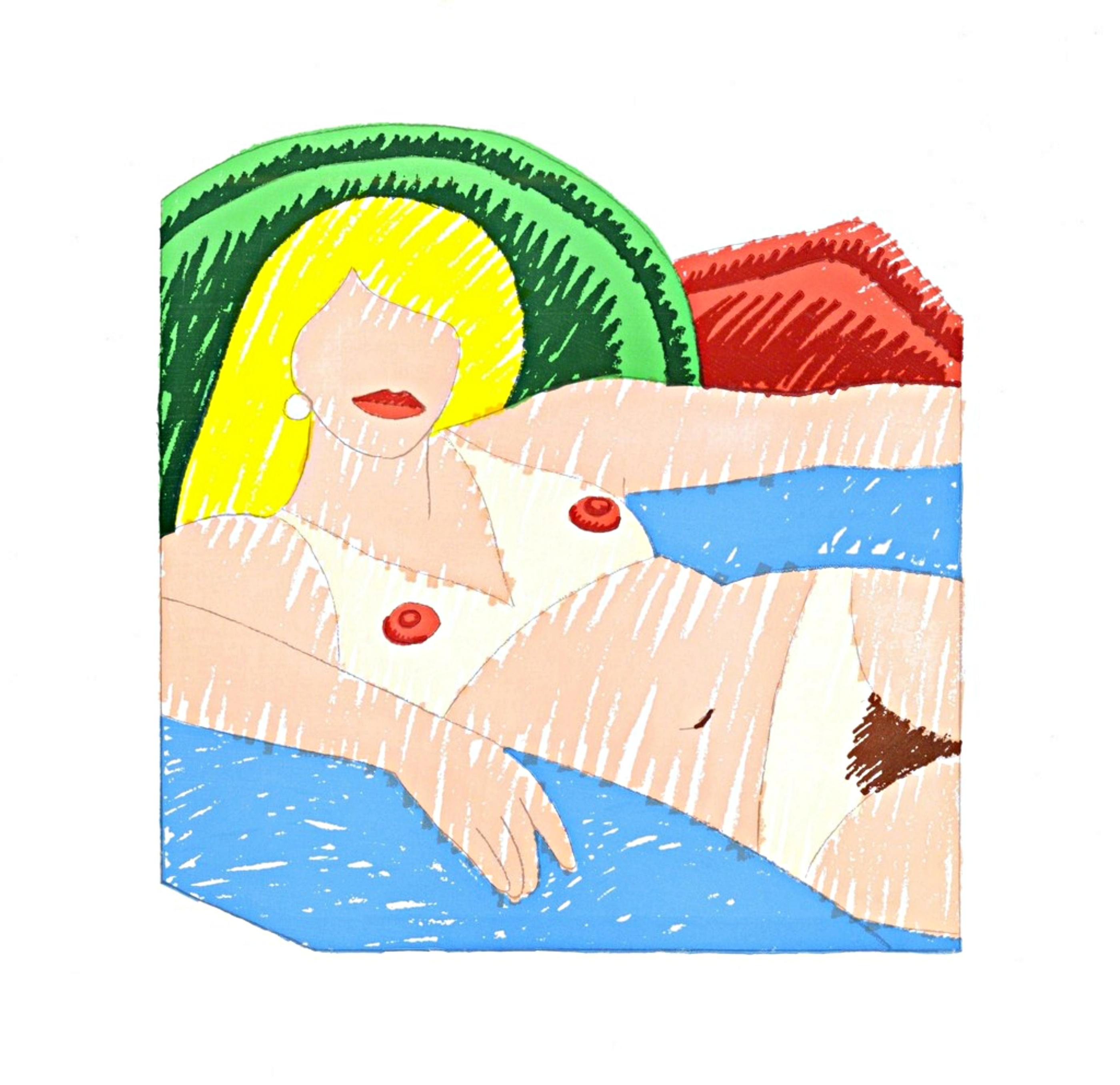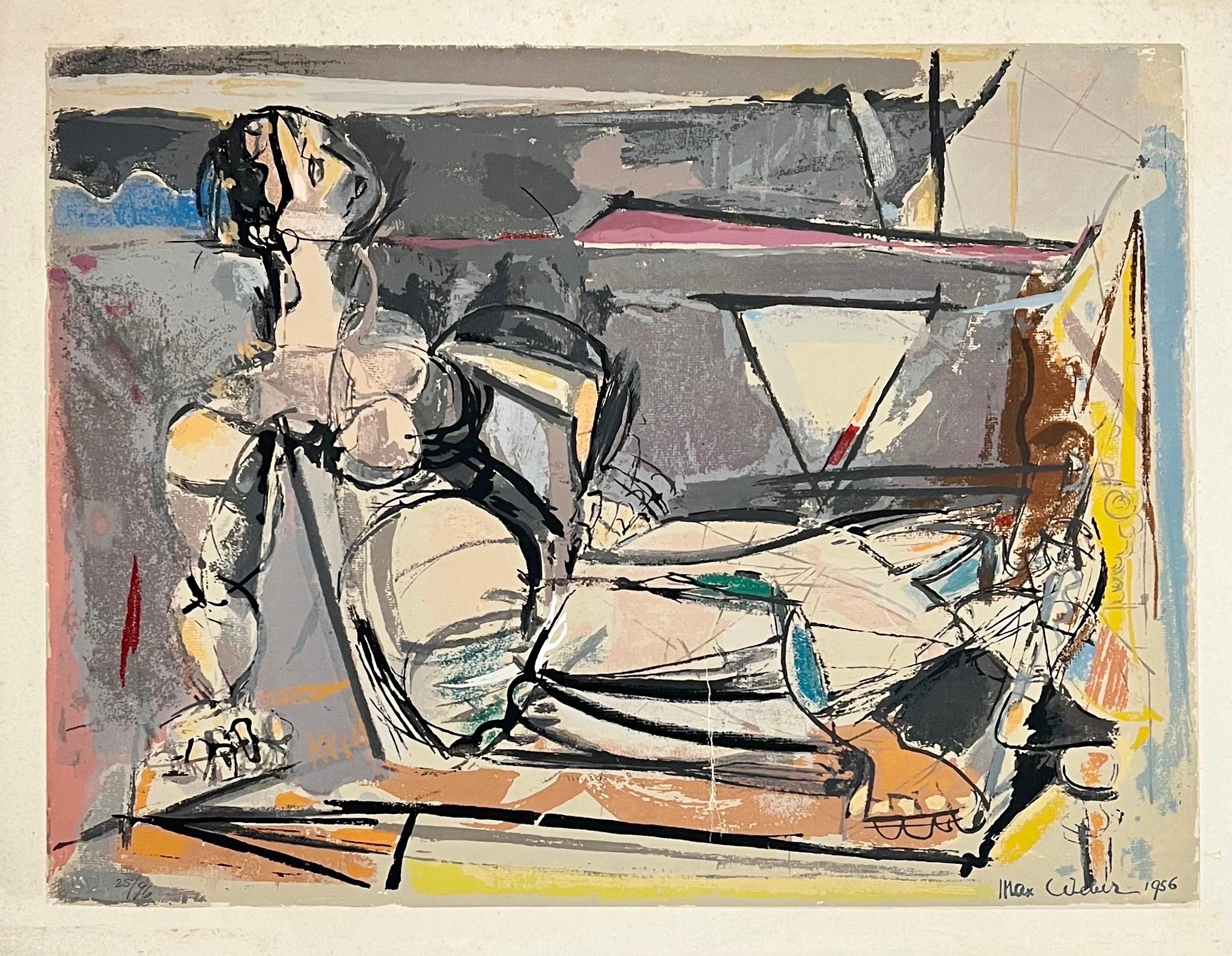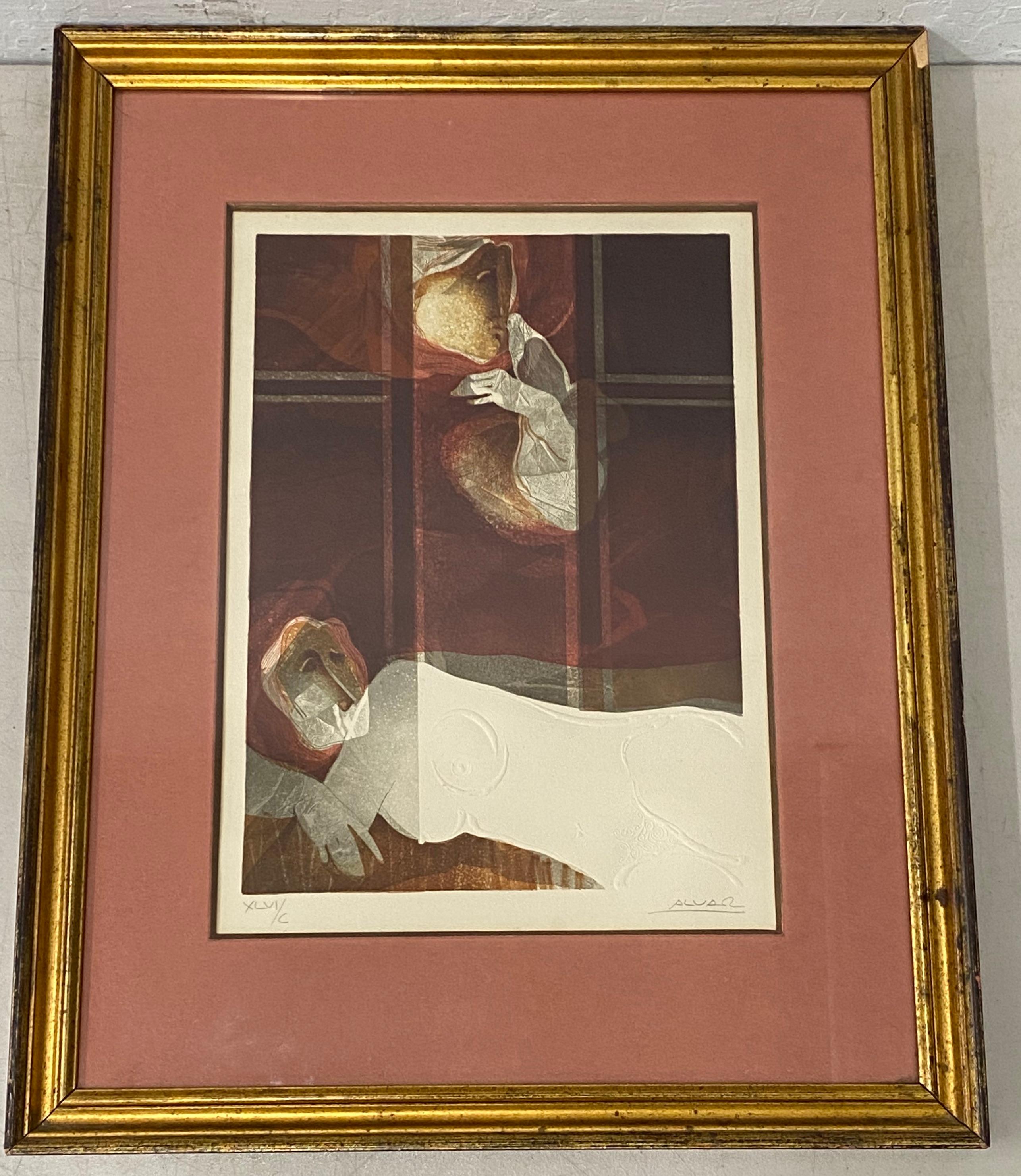
Jiang Tie Feng Girl of Suzhou Color Serigraph Large Nude Female Art painting
View Similar Items
1 of 8
Jiang Tie Feng Jiang Tie Feng Girl of Suzhou Color Serigraph Large Nude Female Art painting1987
1987
About the Item
- Creator:Jiang Tie Feng (1938)
- Creation Year:1987
- Dimensions:Height: 44 in (111.76 cm)Width: 45 in (114.3 cm)
- More Editions & Sizes:Edition of 293Price: $2,895
- Medium:
- Movement & Style:
- Period:
- Condition:
- Gallery Location:Bloomington, MN
- Reference Number:1stDibs: LU123016483802
You May Also Like
- Keith Haring Theater der Welt Frankfurt (Keith Haring 1985)By Keith HaringLocated in NEW YORK, NYKeith Haring, Theater der Welt Lithograph, Frankfurt, Germany 1985: Original 1st printing produced during Haring's lifetime. Bold, stand-out colors that make for brilliant, largely s...Category
1980s Pop Art Nude Prints
MaterialsScreen
- Custom Print I (from 11 Pop Artist, Volume I) I Dream of Jeannie & Blue CarBy Peter PhillipsLocated in New York, NYPeter Phillips Custom Print I (from 11 Pop Artist, Volume I), 1965 Silkscreen on foil coated paper 24 × 20 inches Pencil signed, dated and numbered 100/200. Unframed This dazzling, ...Category
1960s Pop Art Nude Prints
MaterialsScreen
- Shiny Nude (Stealingworth, 33)By Tom WesselmannLocated in New York, NYTom Wesselmann Shiny Nude (Stealingworth, 33), 1977 Silkscreen on glossy cast-coated Kromekote paper 8 × 8 inches Edition 489/1000 Pencil numbered 489/1000 with artists printed name on the verso; Held in original stamped envelope Distributed by the Museum of Modern Art; printed by Unity Engraving Co. Unframed "Shiny Nude" - a dazzling limited edition, pencil numbered print features all of the hallmarks of the risque art arising from the sexual revolution of the 1960s and 1970s- saturated lips, full pubic hair...Category
1970s Pop Art Nude Prints
MaterialsScreen
- Parade of Women, from Deluxe, Hand Signed, 85/100 1 Cent Life Portfolio, FramedBy Claes OldenburgLocated in New York, NYClaes Oldenburg Parade of Women from the Deluxe hand signed edition of 1 Cent Life Portfolio (Acquired from the Estate of Robert Indiana), 1964 Color lithograph on wove paper Published by E.W. Kornfeld, Germany, Written by Walasse Ting, Edited by Sam Francis Hand-signed by Claes Oldenburg on the lower right front; numbered 85/100 on the colophon page a copy of which is affixed to the back of the frame -see photo Frame included: elegantly floated and framed in hand made museum frame with UV plexiglass, and colophon page with unique edition number affixed to the back. (see photos) This hand signed work is from the Deluxe hand signed edition of only 100 - not to be confused from the unsigned edition of 2000. (None of the works from the edition of 2000 were ever signed by Oldenburg.) Hand signed editions are rarely if ever seen on the marketplace. This original lithograph, splayed across two pages, is from the Deluxe edition of the legendary 1 Cent Life Portfolio, one of the most important and celebrated artistic collaborations of the 1960s. Chinese American artist and writer Walasse Ting, in collaboration with Sam Francis, assembled a group of the most significant Pop and Abstract Expressionist artists in America, including Pop Artist Claes Oldenburg, along with the European COBRA artists to create the definitive artistic portfolio, with text by Walasse Ting. The Deluxe edition, which features hand signed prints was published in a limited edition of only 100. This is one of them. Of the 100, editions numbered 60-100, or 40 portfolios, were reserved exclusively for Artists & Collaborators. This hand signed Claes Oldenburg lithograph...Category
1960s Pop Art Abstract Prints
MaterialsPencil, Lithograph
- Figure & Phallus IIBy Claes OldenburgLocated in New York, NYClaes Oldenburg Figure & Phallus II, 1975 Etching on Wookey Hole hand-made paper 25 × 20 inches Edition of 60 Hand signed, dated and numbered from the limited edition of 60 on the re...Category
1970s Pop Art Nude Prints
MaterialsEtching
- American Modernist Cubist Lithograph Screenprint "Reclining Woman" Max WeberBy Max WeberLocated in Surfside, FLReclining Cubist Nude Woman Max Weber (April 18, 1881 – October 4, 1961) was a Jewish-American painter and one of the first American Cubist painters who, in later life, turned to more figurative Jewish themes in his art. He is best known today for Chinese Restaurant (1915), in the collection of the Whitney Museum of American Art, "the finest canvas of his Cubist phase," in the words of art historian Avis Berman. Born in the Polish city of Białystok, then part of the Russian Empire, Weber emigrated to the United States and settled in Brooklyn with his Orthodox Jewish parents at the age of ten. He studied art at the Pratt Institute in Brooklyn under Arthur Wesley Dow. Dow was a fortunate early influence on Weber as he was an "enlightened and vital teacher" in a time of conservative art instruction, a man who was interested in new approaches to creating art. Dow had met Paul Gauguin in Pont-Aven, was a devoted student of Japanese art, and defended the advanced modernist painting and sculpture he saw at the Armory Show in New York in 1913. In 1905, after teaching in Virginia and Minnesota, Weber had saved enough money to travel to Europe, where he studied at the Académie Julian in Paris and acquainted himself with the work of such modernists as Henri Rousseau (who became a good friend), Henri Matisse, Pablo Picasso, and other members of the School of Paris. His friends among fellow Americans included some equally adventurous young painters, such as Abraham Walkowitz, H. Lyman Sayen, and Patrick Henry Bruce. Avant-garde France in the years immediately before World War I was fertile and welcoming territory for Weber, then in his early twenties. He arrived in Paris in time to see a major Cézanne exhibition, meet the poet Guillaume Apollinaire, frequent Gertrude Stein's salon, and enroll in classes in Matisse's private "Academie." Rousseau gave him some of his works; others, Weber purchased. He was responsible for Rousseau's first exhibition in the United States. In 1909 he returned to New York and helped to introduce Cubism to America. He is now considered one of the most significant early American Cubists, but the reception his work received in New York at the time was profoundly discouraging. Critical response to his paintings in a 1911 show at the 291 gallery, run by Alfred Stieglitz, was an occasion for "one of the most merciless critical whippings that any artist has received in America." The reviews were "of an almost hysterical violence." He was attacked for his "brutal, vulgar, and unnecessary art license." Even a critic who usually tried to be sympathetic to new art, James Gibbons Huneker, protested that the artist's clever technique had left viewers with no real picture and made use of the adage, "The operation was successful, but the patient died."[8] As art historian Sam Hunter wrote, "Weber's wistful, tentative Cubism provided the philistine press with their first solid target prior to the Armory Show." The Cellist...Category
Mid-20th Century Cubist Abstract Prints
MaterialsScreen














